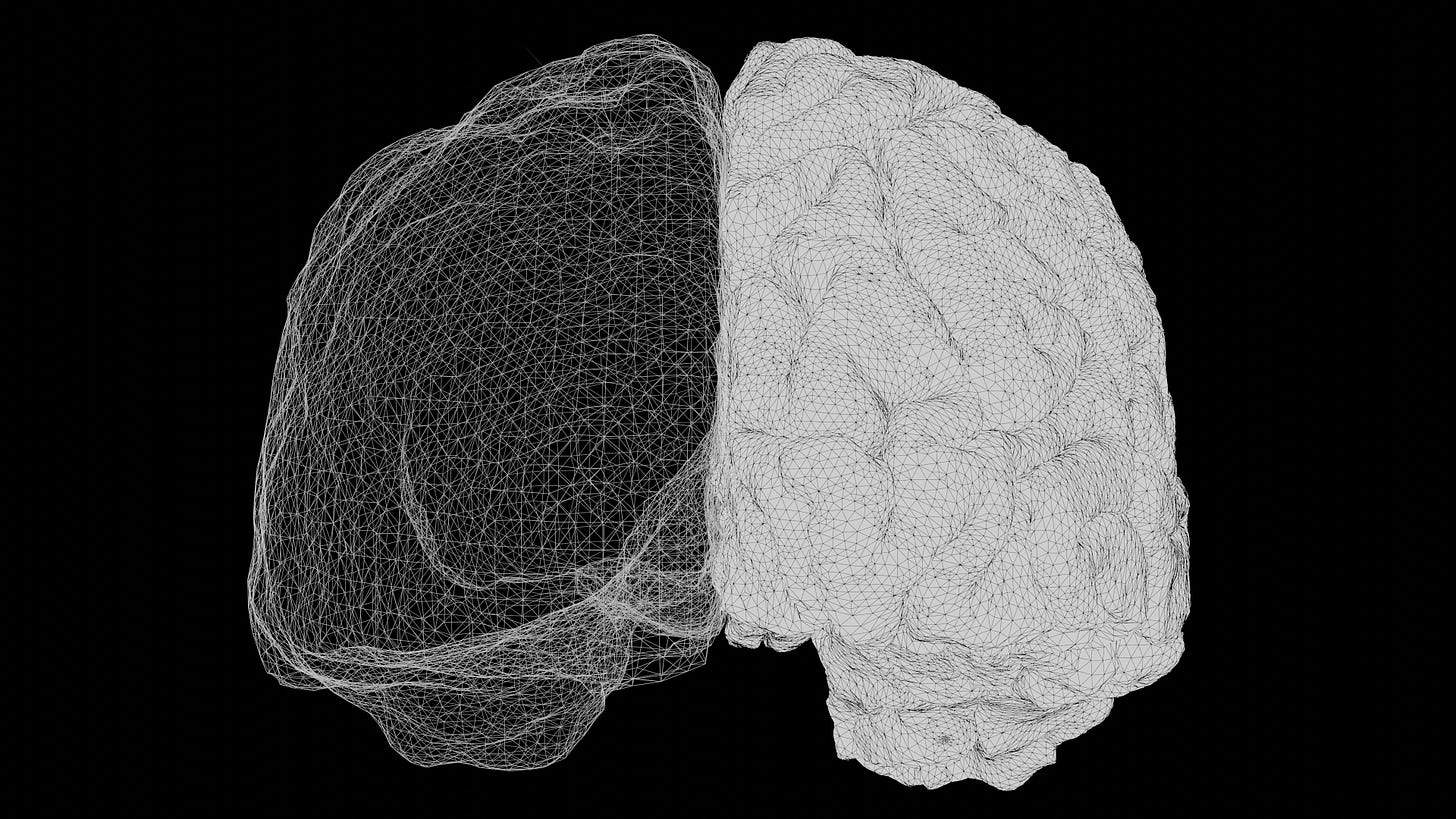Neuroscience and the structure of knowledge
Mapping differences between brain hemispheres against the processes we use to build knowledge

Alongside my repeated arguments for epistemic humility, I've been arguing here for a particular account of the structure of human knowledge. In short, we humans construct abstracted representations (theories, pictures, principles, stories etc) that capture our knowledge of the world, and then we test these against our experiences to check whether they are true. This splits the process of building knowledge into two distinct functions: building up the theories or representations, and the interaction of knowledge with reality. I have motivated this philosophically, including by looking at the processes by which science works, but it turns out that it lines up strongly with the findings of modern neuroscience about the structure of the human brain, at least as summarised by Iain McGilchrist.
I have been reading his major work, The Master and his Emissary, that covers research into differences between the left and right hemispheres in our brains (and other animals). Much of the evidence in humans comes from people who have had a stroke or other brain damage in only one side of the brain and the consistent patterns in the effects.1 McGilchrist argues that there are many myths about the differences, such as one hemisphere being logical and the other creative. Nevertheless, there are strong differences between the hemispheres that are not so much about what each hemisphere does (although these exist) but rather in how each hemisphere works. To quote:
.... the essential difference between the right hemisphere and the left hemisphere is that the right hemisphere pays attention to the Other, whatever it is that exists apart from ourselves, with which it sees itself in profound relation. ..... by contrast, the left hemisphere pays attention to the virtual world that it has created, which is self-consistent, but self-contained, ultimately disconnected from the Other, making it powerful, but ultimately only able to operate on, and to know, itself.2
For me, what is fascinating is that these differences map very clearly onto the two functions I have previously argued are involved in human knowledge. The left hemisphere role - focused on creating a virtual world that is (to use McGilchrist's phrasing elsewhere) a re-presentation of the world - is about building abstracted representations, the theories or pictures, that codifies our knowledge. The right hemisphere role - focused on what is there apart from ourselves - is all about testing against reality. Assuming that McGilchrist’s analysis of the evidence is broadly correct, we have further evidence in support of my analysis of the structure of knowledge.
More similarities
While I have issues with some parts of McGilchrist’s work,3 there are a number of further overlaps between my arguments and McGilchrist’s that add weight to some of my observations.
For one, he argues that the right hemisphere of the brain, which deals with making sense of the world and so (in my scheme) truth, is also the primary home of emotions in the brain. People who have brain damage in their right hemisphere often lose touch with reality and end up believing lots of implausible, crazy things. This adds further evidence to my previous argument that our emotions are important for the way we find and access truth.
Another similarity is that McGilchrist has argued elsewhere that AI is different to human thought because it only copies a left hemisphere pattern of thinking. I have argued a couple of times that AI is similarly limited because, to use his phrasing above, "ultimately disconnected from the Other [i.e. the World]". In my words, AI does not have access to reality beyond the information it is fed, and so it only has access to one half of the two part process necessary for knowledge.
A final point of overlap is that left hemisphere patterns of thinking expect and prioritise certainty, while the right hemisphere approach is comfortable with tension and uncertainty. Much of McGilchrist’s book is focused on a broader cultural and philosophical argument that our Western tradition and modernity have unhelpfully prioritised left hemisphere patterns of thinking. This analysis mirrors the conclusions of my articles a couple of years ago that looked at the way we rely on an algorithmic approach to knowledge, and the limitations involved.
A related theme in both of our works is the ways in which Western philosophy and thought has focused on achieving a certainty about knowledge that comes from how we want the world to work (or a left hemisphere preference according to McGilchrist), rather than being grounded in reality. I have gone into detail in three previous posts about this historical quest for unattainable epistemic certainty.
I don't have space here to go into the evidence. The very short version is that people who have brain damage on the left hemisphere (so rely only on their right hemisphere) tend to rely strongly on intuition, struggle to identify the parts of an object and find repeated processes difficult. Those with damage on the right hemisphere tend to fixate on details (but struggle to grasp the whole), identify living things as artificial and struggle to identify anything new.
Iain McGilchrist, The Master and his Emissary, Yale University Pres, New Expanded Edition, 2019. p. 93.
Perhaps unsurprisingly given his background and training, his neuroscience seems more rigorous than his explanation of the history of ideas.
